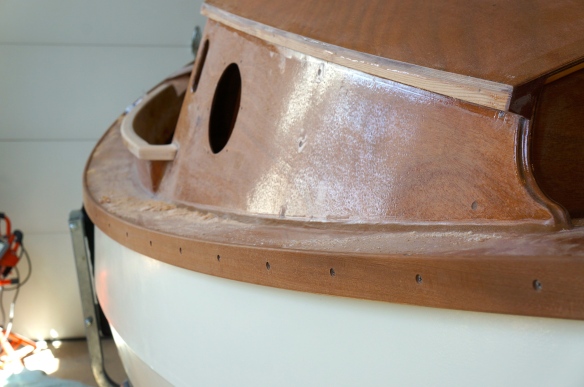While waiting for my rigging to arrive, I installed the tiller arm in Shackleton. This was a really fun step to complete. After climbing in and checking the position, I believe the arm will work well for sitting or standing. Time will tell.
 I left a slight protrusion of the tiller out the back of the rudder head for visual effect. The pin is 3/8″ x 2 3/4″ and fits beautifully.
I left a slight protrusion of the tiller out the back of the rudder head for visual effect. The pin is 3/8″ x 2 3/4″ and fits beautifully. John Welsford designed the tiller cut out through the transom perfectly. Check out the 1/8″ clearance when the tiller arm is thrown fully to port.
John Welsford designed the tiller cut out through the transom perfectly. Check out the 1/8″ clearance when the tiller arm is thrown fully to port. And to starboard.
And to starboard. The arm comes through the cut out with a good safety margin above and below as well.
The arm comes through the cut out with a good safety margin above and below as well. Finally, with the rudder completely to port, it still clears the outboard motor bracket. How did I get this lucky?
Finally, with the rudder completely to port, it still clears the outboard motor bracket. How did I get this lucky?
Now if that rigging would arrive






































































